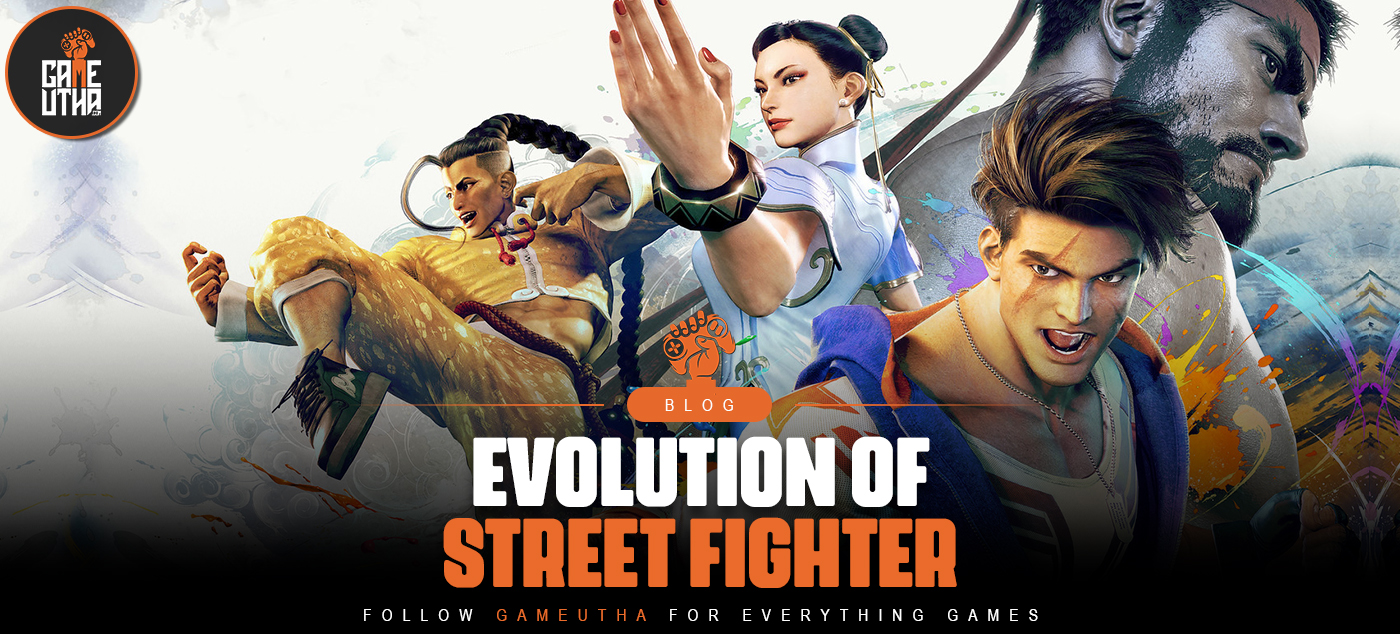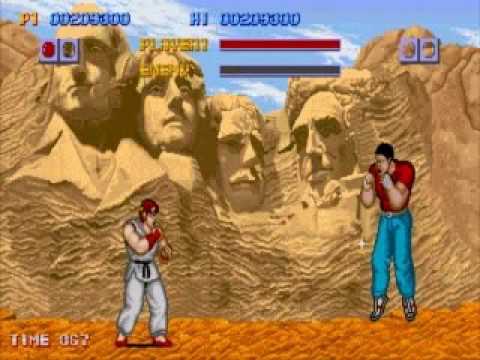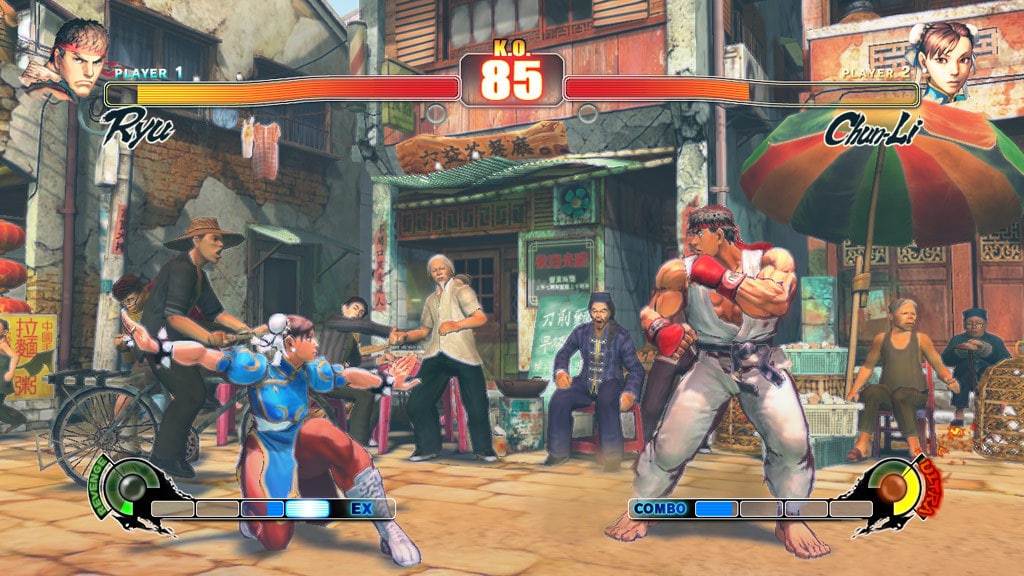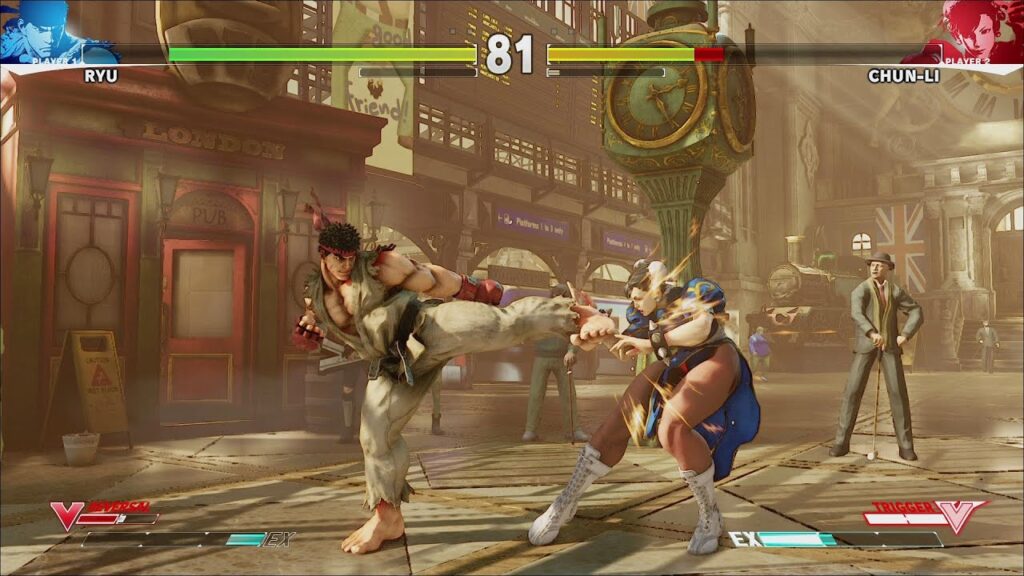Evolution Of Street Fighter
Ali Hasan June 18, 2022

Street Fighter defined the PvP fighting genre when it was first released in 1987 and then redefined it with its sequel in 1990. Street Fighter II went on to become a global phenomenon and made the fighting game genre what it is today. The series has stood the test of time, spawning multiple sequels over several console generations, and shows no signs of slowing down.
Today at Gameutha.com we will go over the evolution of Street Fighter. From its humble beginnings in the 1980s to the latest announcements from Street Fighter 6 and how it has continued to stay relevant despite an ever-saturating market.
Street Fighter
Street Fighter was first released in 1987. Released primarily on arcade cabinets, the game later made its way onto home consoles. It was so popular that it prompted other developers to release similar games. These came in the form of games like Mortal Kombat and Virtua Fighter.

While games like Contra defined the 2D sidescroller genre, Street Fighter defined the PvP fighting genre. It introduced players to iconic characters like Ryu, Ken, Chun-Li, and Guile that are still loved even today. The fighters pretty much all shared the same moves and fighting styles.
Street Fighter was the first fighting game to have six attack buttons as compared to the more conventional three-button layout. This allowed the game to have a lot more combat depth as players could chain together a lot more combos with the added buttons.
Street Fighter II
Street Fighter II was the highly anticipated sequel that delivered on every promise and then some. The game introduced a slew of characters and mechanics that changed gaming forever.
Street Fighter II introduced new characters and also gave each and every character their own set of moves and abilities. This was the first time players had the chance to master more than one character. While the original game shared move sets across characters Street Fighter II had unique move sets across all characters.

It also mandated the release of controllers with more buttons. At the time controllers usually came with two buttons. Sega released a special six-button control pad for the Sega Megadrive to coincide with the release of Street Fighter II
Street Fighter would go on to spawn several incremental updates which included new abilities characters, upgrades, and mechanics as well as introducing more balancing updates.
Street Fighter III: New Generation
The next installment in the Street Fighter series introduced an entirely new character roster with the exception of Ryu and Ken. Since it was primarily developed for CD Rom-based systems the graphics saw a major improvement.
Street Fighter III introduced parrying into the series for the first time. Allowing players to block and deflect attacks allowed for counterattacks to be much easier and also prevented cornering. Players could also now perform high jumps and dashes.

Super Arts was another feature added to the game it allowed players to execute devastating special moves by filling up the gauge. Players were able to choose from a number of different Super Art for each character.
Street Fighter IV
Street Fighter IV arrived eleven years after Street Fighter III. The game went back to the formula of Street Fighter II and borrowed heavily from it. The parry system was removed and focus attacks & Ultra combos were added.
Street Fighter IV saw the return of old characters like Chun-Li, Guile, and E. Honda while also bringing back fan-favorites like Ryu and Ken. New characters like Abel and Rufus were introduced.

The fourth installment saw characters and environments rendered in 3D, although the game was still set on a 2D plane to retain the classic feel of the older games.
Street Fighter V
Street Fight V was released exclusively for PS4 and PC in 2016. The game featured more realistic character models, moving away from the fantastical elements of the previous games and simplified the core mechanics.
Super Arts were removed in favor of critical arts. Guard break returned along with EX Special moves. New features included V-Gauge which allowed for special unique attacks for each character. The series also added destructible environments as well as interactable objects.

New characters were added in the form of paid DLC which did not go down well with fans although there were plenty of free content updates as well including a story mode DLC.
Also Read: Everything Revealed at Sony’s State Of Play
Street Fighter 6
The next installment in the long-running Street Fighter series will bring with it, even more, features and new mechanics. Drive impact will allow players to absorb oncoming attacks while drive parry does the same and replenishes your drive meter.
Drive reversal will allow the player to block incoming attacks and deliver a lower intensity counter-attack while drive rush will let players initiate a fast dash.
Street Fighter 6 will also introduce a simpler button scheme aimed at making the game more accessible to newer players. The game also adds customization in the form of different intros and game faces. And for the first time ever the game will feature in-game live commentary.
Street Fighter 6 launches next year on PS4, PS5, Xbox One, Xbox Series X & S, and PC.
Looking to pick up a PS5 or an Xbox Series X? look no further because Gameutha.com has you covered. Browse hundreds of ads today to pick out your next console or game. Gameutha.com is also home to the latest gaming news, reviews, and updates.